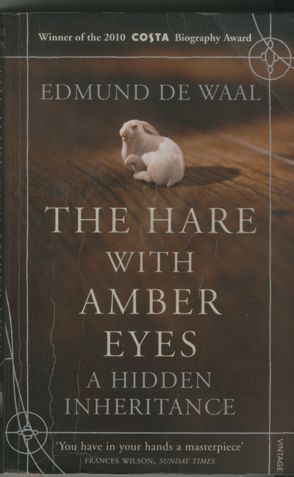
THE HARE WITH AMBER EYES - A Hidden Inheritance
By Edmund de Waal
First Printing: Sept 2010 Chatto & Windus, London and Farrar Straus Giroux, New York. A Vantage Book. Paperback 354 pps. Hebrew edition at Steimatsky, NIS 79.
Reviewed by Rolly King Kohansky
This may be a somewhat unorthodox manner in which to introduce a book review, but nevertheless, I’m going for it. I was captivated by this book, by its beauty, its lyricism and the secrets it reveals. Edmund de Waal gracefully describes the saga of the enormously wealthy Jewish Ephrussi family, taking the reader on a sensuous, gorgeous odyssey through history at a time when life was gentler (if you were rich and privileged). At a time when one went through life in a leisurely manner, with plenty of time to smell the roses, grow the roses, buy the roses and everything else of beauty that your heart desired. The author has wrapped his beautiful work in golden threads that envelop and enthrall you, even as you know that the dream will come crashing down into a nightmare with the chamber of horrors known as Nazi Germany.
The Hare of the title refers to one of the ‘Netsuke’, exquisite miniature sculptures of ivory or wood, invented in Japan in the 17th century for practical purposes. Since there were no pockets in the garments, one had to store necessities in containers hung by cords and fastened with toggles called netsuke. These treasures become the focus, the symbol of a family’s legacy.
The collection of netsuke was owned by de Waal’s Great-Uncle Iggy, who lived in Tokyo with his partner. Edmund visited him while working with master craftsmen, on a grant from a Japanese Foundation in Tokyo. Their weekly luncheons featured a refined French menu of omelette, white wine, fresh peaches and cheeses, with the dessert finding them looking at the netsuke, holding them, discussing the ingenuity of the miniature carvings, none larger than a matchbox; the boy with the samurai sword, the hare with the amber eyes, the tumbling acrobats locked in embrace, the tiger poised ready to pounce. His great-uncle would drop bits of information about the old days and how the collection was started by Great-Great-Great-Uncle Charles in the 1880s.
Upon Iggie’s death, the author inherited them, and, intrigued by the netsuke's journey from France with its return full circle to Japan several centuries later, subsequently set out to trace the story of his antecedents.
We are the richer for it.
When you pick up this book you know you are in the hands of an artist. This is a memoir, elegantly written by a celebrated, internationally recognized British ceramicist and potter, recipient of many awards, including an OBE. His work is displayed in museums around the world, and eagerly acquired by cognoscenti.
Edmund de Waal is a descendant of the affluent Ephrussi family, a saga that began in Odessa where they were prosperous grain merchants.
It was the early 19th century, and as a matter of course, the family travelled abroad to take up residence, in great splendor, in the important capitals of the world , graduating from grain to the more prestigious circles of banking and high finance. Contemporaries of the Rothschilds, they lived opulent lifestyles in splendid palaces in Paris and Vienna, as befitting their station, their Jewishness either ignored or tolerated by other affluent members of society. The Ephrussi progeny were raised in luxurious, gracious environments, a world of high society, of gold-crested, beautiful horse-drawn carriages, fencing lessons, boxes at the opera, extravagant dinner parties. As a matter of course, the young men went into the banking business and the young ladies were expected to marry those of their own social stratum and religion, whenever possible.
The year is now 1880, and Charles, one of the sons of Jules Ephrussi, was not ‘into finance’, but, as a true aesthete, was able to indulge his passion in the pursuit of beauty by acquiring objects that inspired envy and admiration. Charming, intelligent and good looking, he was a much sought-after dinner guest, and was invited to the most elite and influential salons of the time. He became an avid collector of art and treasures, had a mistress, (married, of course), wrote for the leading literary magazine and is thought to have been the model for Marcel Proust’s ‘Swann,’ the quintessential aesthete portrayed in ‘A La Recherche du Temps Perdu.’ (Remembrance of Times Past.)
The author has brought us the perfumed scent, the sensuousness of silks, the rustle of satins, the colors and glory of paintings, tapestry, sculptures and objects of Japonisme, which was a craze in those days. Among Charles’ collections was the extensive one of the netsuke, those exquisite Japanese miniatures, displayed by him in a specially created vitrine for the admiration of guests, and played with, on the sly, by his children.
Then the Dreyfuss Case exploded in France and rumblings of anti-Semitism and alarms signaled to Charles, a Dreyfuss supporter, that danger was lurking. Assimilation could only go so far. Wanting to preserve something of his treasures, he gave the 264 netsuke collection to his cousin Victor in Vienna as a wedding gift.
The times became fraught with menace. The terror was near. First, the rumblings erupted in the horrendous events of the Great War, and then, hard on its heels, the Second World War. The Ephrussi family (those who had survived) were scattered in different parts of the world - New York, London, Tokyo.
While the Germans and Austrians swept through Europe on their reign of murder and destruction, greedily gobbling up treasures as they destroyed lives, the netsuke survived. Their connection to the Ephrussi history might have ended there but for an accidental discovery.
Rather than act as spoiler, I will leave the reader to follow the author’s amazing journey as he reconstructs the lives of his illustrious Jewish forebears; and is, himself, the son of a Dean of Canterbury. It’s a fascinating trip well worth taking about a gracious era that disintegrated into the most terrible tragedy in human history, a ‘temps perdu’, but not forgotten.
For the Ephrussi Family, their history endures in this memoir.
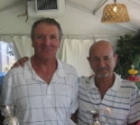 ESRA Golf Competition 2012
ESRA Golf Competition 2012 Upside-Down Coffee – for another world. A Review
Upside-Down Coffee – for another world. A Review If I could tell you - a review
If I could tell you - a review Robert Kwong at the Yeshiva
Robert Kwong at the Yeshiva 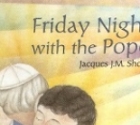 Friday Night with the Pope - A Book Review
Friday Night with the Pope - A Book Review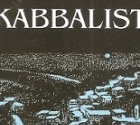 The Kabbalist - A Book Review
The Kabbalist - A Book Review 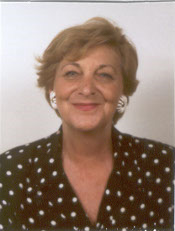 Rolly King Kohansky
Rolly King Kohansky